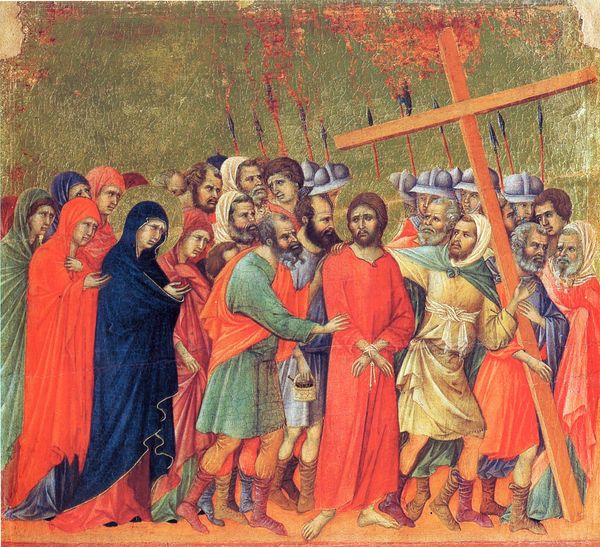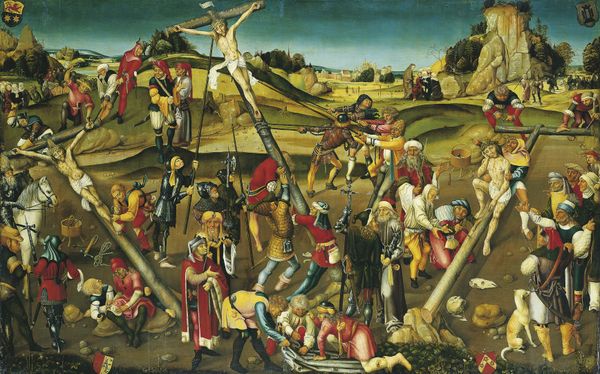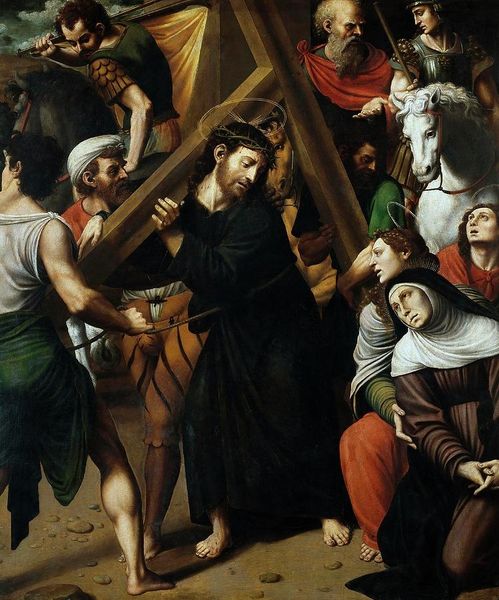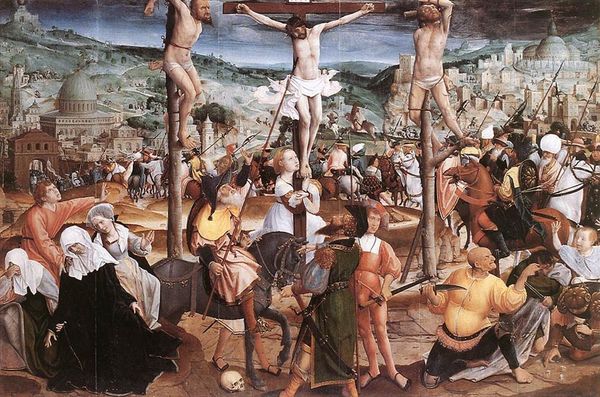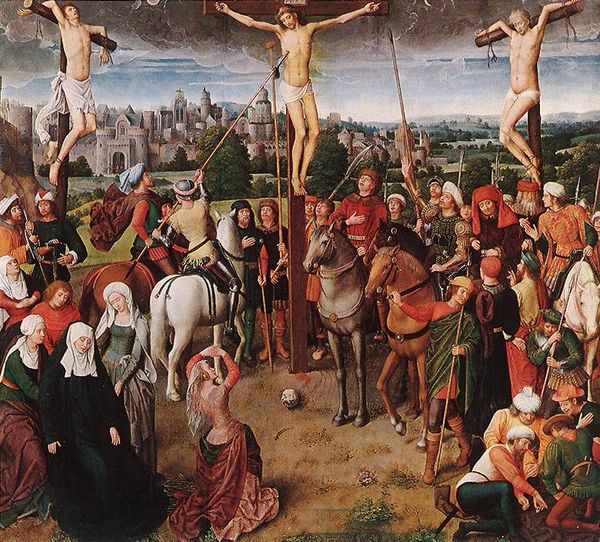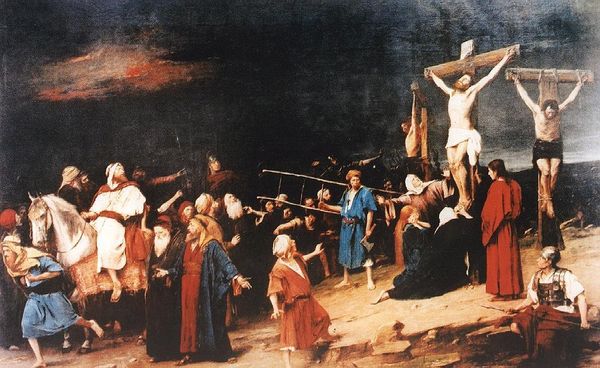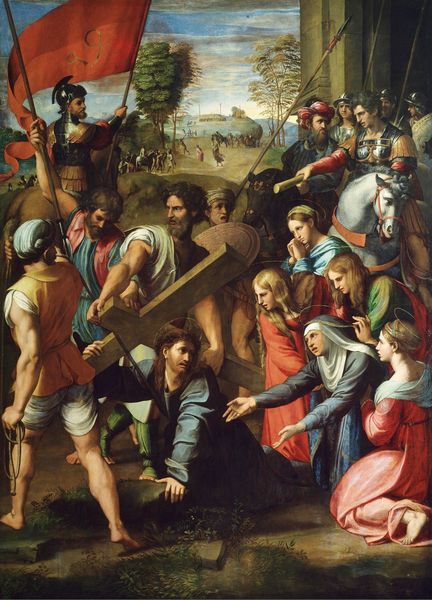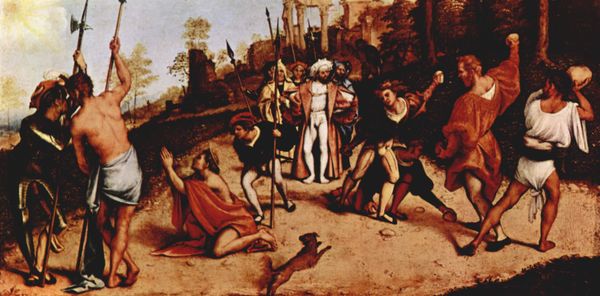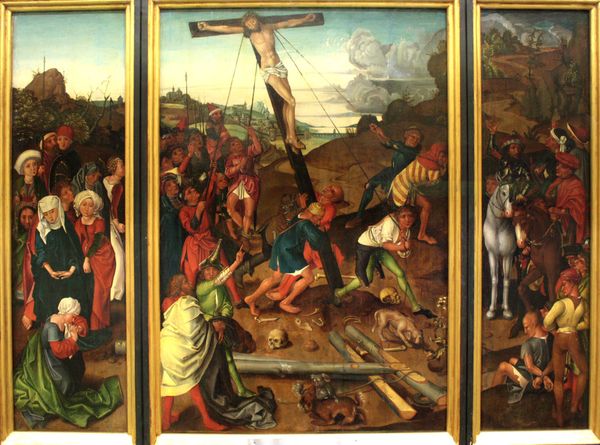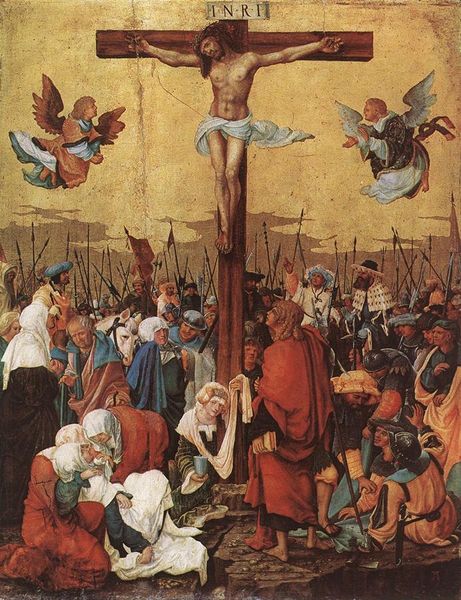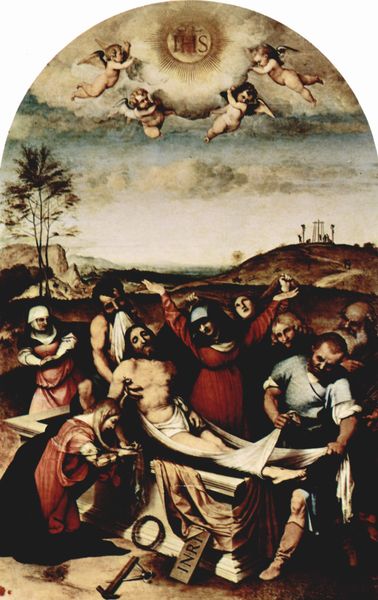
painting, oil-paint
#
portrait
#
narrative-art
#
painting
#
oil-paint
#
landscape
#
figuration
#
oil painting
#
jesus-christ
#
cross
#
christianity
#
mythology
#
history-painting
#
portrait art
#
modernism
#
christ
Copyright: Public domain US
Editor: This is Andre Derain's "The Road to Calvary," painted in 1901 using oil paint. The scene is crowded, with a muted color palette. It's intense but also feels oddly static, like a theatrical staging. What do you see when you look at this piece? Curator: I see a potent commentary on power and its abuse, framed within a familiar religious narrative. Consider the date: 1901. Europe was at the height of its colonial ambitions. Derain, knowingly or unknowingly, mirrors the spectacle of Christ's suffering with the suffering imposed upon colonized peoples. It forces us to confront the ways in which dominant narratives, religious or otherwise, can mask oppression. Notice how Christ is framed, almost crushed, by the weight of the cross and the gaze of the armed figures. Who benefits from this suffering? Editor: That’s a powerful way to look at it. So you're saying it’s less about religious piety and more about societal critique? Curator: Exactly. Think about the figures surrounding Christ: the soldiers, the silent onlookers. They represent various forms of complicity, mirroring how institutions and individuals often uphold unjust systems. The landscape itself seems burdened, reflecting the weight of history and the cycle of violence. What do you make of the people in the background? Editor: I didn’t notice them at first! They almost look like they are warring over something in the distance… so maybe the painter tries to amplify a sense of general chaos? Curator: Perhaps, or it underscores how localized suffering fits within a larger pattern. The painting implicates everyone. Editor: It's fascinating how the painting speaks to these issues even today. I came to it expecting a purely religious scene, but it's so much more. Curator: Precisely. And that's the power of art: to continuously resonate and challenge us across time, and it requires constant engagement with the social context in which it exists and is consumed.
Comments
No comments
Be the first to comment and join the conversation on the ultimate creative platform.

